100th Anniversary Great Nave Tour at the Cathedral of St. John the Divine
Celebrate the 1925 construction of the stunning nave inside the world's largest Gothic cathedral!


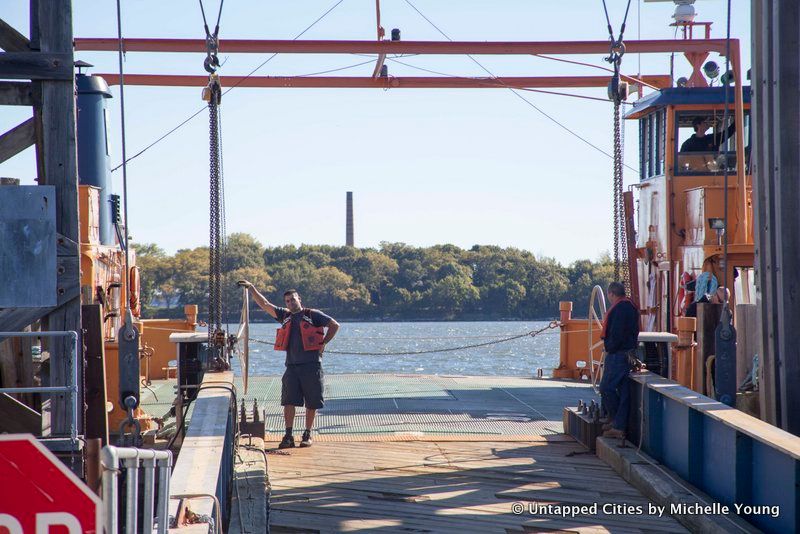
The ferry to Hart Island, visible in background across from City Island in the Bronx
In a city where everything seems to be just at one’s fingertips – from a taxi ride to the hope of a better future – there remain a few mythical places that are just out of grasp. The history of New York City is at the root of this, with centuries of policy that pushed undesirable activities and populations to seemingly distant islands. But as development continued, these islands inched closer and closer to desirable waterfront real estate – both industrial and residential. From Rikers Island, where New York City’s largest jail is, to the numerous abandoned islands, the city is simultaneously feeling the impact of this long, isolationist history and actively continuing to practice some of the same ideas to this day.
Hart Island, New York City’s current potter’s field, or mass burial ground, is one of these places – missing off mass transit maps and rarely thought about. Yet, it contains about a million souls, those who died without known family, means, or burial plans. Under New York State law, next of kin may only have 48 hours to claim their relatives, leading to inadvertent burials on Hart Island.
Like Rikers Island, access can be difficult and cumbersome. That being said, we recently visited the island through a coordinated visit via the New York Adventure Club.

Just a few years ago this would not have been possible, but thanks to the activism of the Hart Island Project, the island is now open to relatives of the deceased to visit burial sites and to general visitors who can go to a gazebo viewing area. These visits take place only once a month (on separate days) and everything is coordinated through the New York City Department of Corrections. If this sounds odd to you, it’s because the inmates of Rikers Island are responsible for burying the dead, paid at $0.50 an hour. Among the other agencies that have a presence on Hart Island: the New York City Department of Transportation Bureau of Ferries runs the ferry from City Island to Hart Island. In fact, the orange vehicular ferry is a former Staten Island Ferry boat and one of the staff on the day we visited was wearing a Staten Island Ferry jacket. The ferry makes it convenient for NYC Health + Hospitals to deliver the bodies to be buried onto the island by truck.
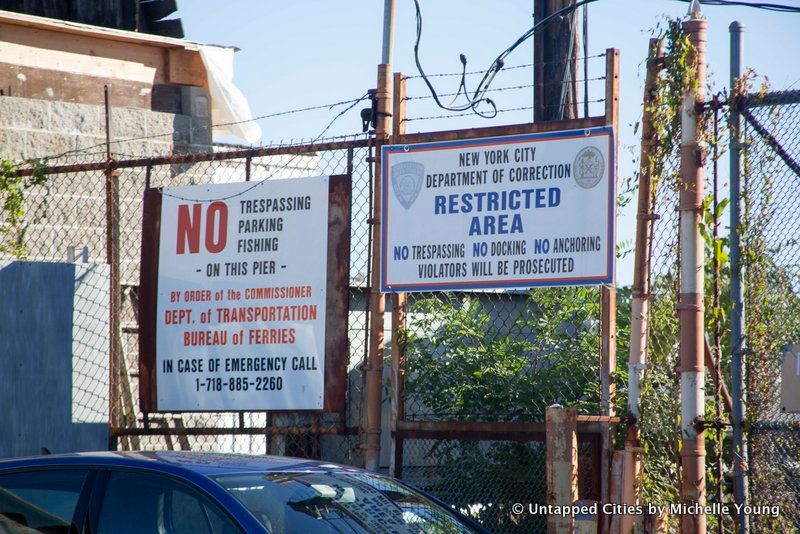
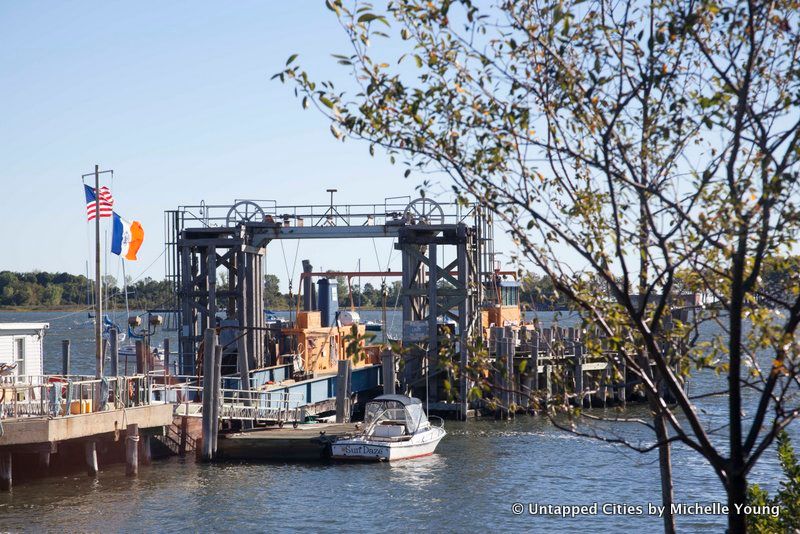
The ferry to Hart Island
Photography is strictly forbidden on Hart Island and you have to deposit your electronics at the transfer bridge even before you get on to the ferry. The Department of Corrections officer told us that even their staff cannot bring electronics. This policy is said to protect the identity of the detainees who work on the island. The sound of chains begins from the start of the ride, coming from the detachment of the boat from the old transfer bridge. The aural connection to prisoner shackles is hard to ignore though, given the history of the island. The reverse process happens on the Hart Island side, as the boat gets hooked onto the other transfer bridge. You walk onto a paved road – to the right was an empty Health + Hospitals truck waiting to get back onto the ferry. Small angels and cherub statues have been placed at the end of the transfer bridge and along the road, a reminder that this unknown place is hallowed ground.
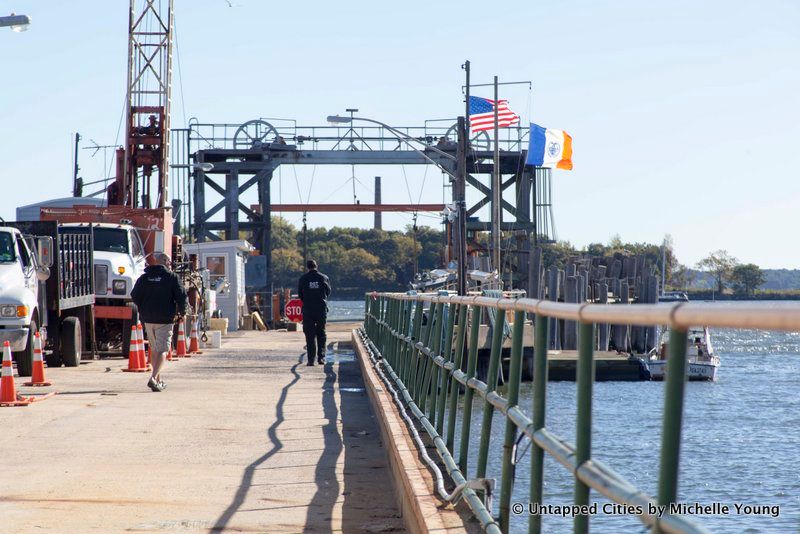
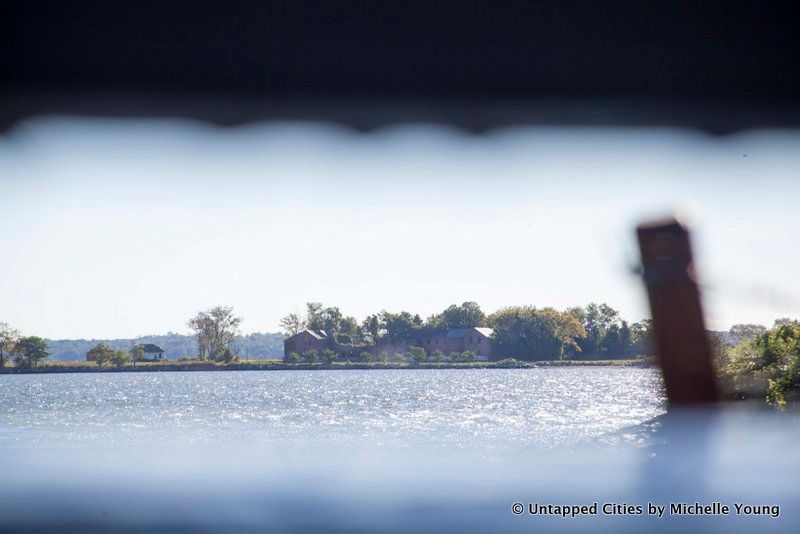
Hart Island
You can only get so far on these visits to Hart Island. Behind one of the numerous abandoned buildings, a wood gazebo was built for visitors ensconced within a white picket fence. There are three rows of wooden benches that look out onto what might be mistaken for an open field. But everyone who does visit here already knows what lies beneath. To the north are the older burials on the island. To the south are new ones and you can see the seventy foot-long trenches that cut an open wound onto the island by perusing satellite imagery or drone videos, like the one taken by The New York Times earlier this year.
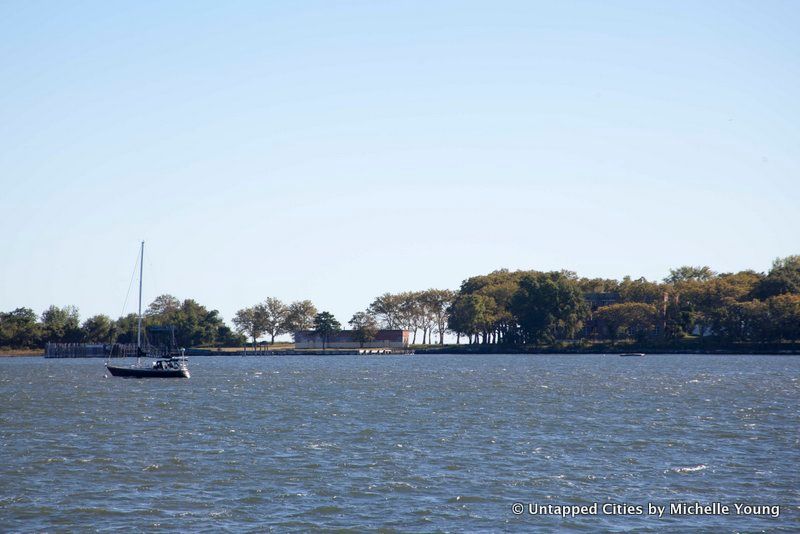
Burials take place every day of the week, the Corrections officer managing our visit told us. They are usually somewhere between 5 and 15 bodies at a time. The bodies are buried three to a stack in the trenches. We were told of one person who requested to be buried on Hart Islans, to be near her relatives. The request was granted.
Disinterments also take place, sometimes when a family discovers that a relative is on Hart Island and makes arrangements to have them buried elsewhere. Our Corrections officer noted that these disinterments should ideally happen within fifteen years, otherwise the bodies get so decomposed, their removal causes damage to the others in the stack.
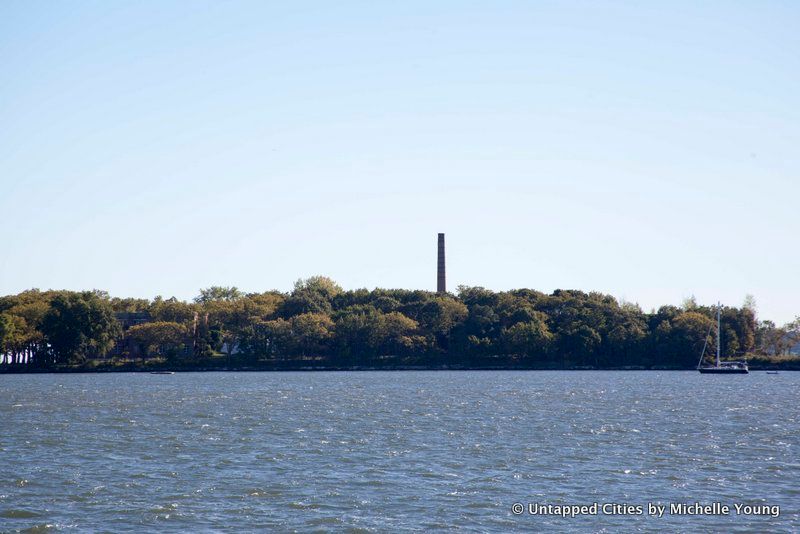
Numerous abandoned buildings stand on Hart Island, remnants of other long forgotten activities on Hart Island. There have been military barracks for the U.S. Navy during World War II, a narcotics rehabilitation center (Phoenix House), a quarantine zone for yellow fever, a prison, women’s insane asylum, a tuberculosis hospital, a Cold War Nike missile base, and a training camp. “You wouldn’t want to go in [those buildings] anyway,” the Corrections officer noted while us urban explorers giggled – we were a group full of people who enjoy just that sort of thing.

But we remained well-behaved, staying within the designated areas and relishing the odd peacefulness of the island, full of people, but only a few are visible and living. It was also a rare chance to speak to Department of Corrections officers in a relaxed, non-threatening environment. The vast manicured open spaces are welcoming, almost calling out to be turned into a public memorial. Lest we forget, most of New York City’s public parks were once potters fields. In a more recent example, in 2016 the Brooklyn Navy Yard reopened a former cemetery area, now called the Navy Cemetery Landscape, to the public for the first time in 90 years. The burials there were disinterred in 1926, however.
Next to the gazebo is a stone marker honoring those buried on Hart Island. The words read “The City of New York Potters Field….”
If the history of New York City is any indication, one day this island will be opened to the public – probably some point after no more burials can be made there. How will the city memorialize such a place in an era when so much documentation is available? It’s no longer possible to simply build on top. Even though Hart Island is off the radar, it makes its presence felt online, in the geography, and daily, in the steady work of Rikers Island detainees. Perhaps it is finally time to acknowledge that cycle of life and death happens even in urban places and find a way to make it visible again.
Next, read about the Top 10 Secrets of Hart Island.
Subscribe to our newsletter